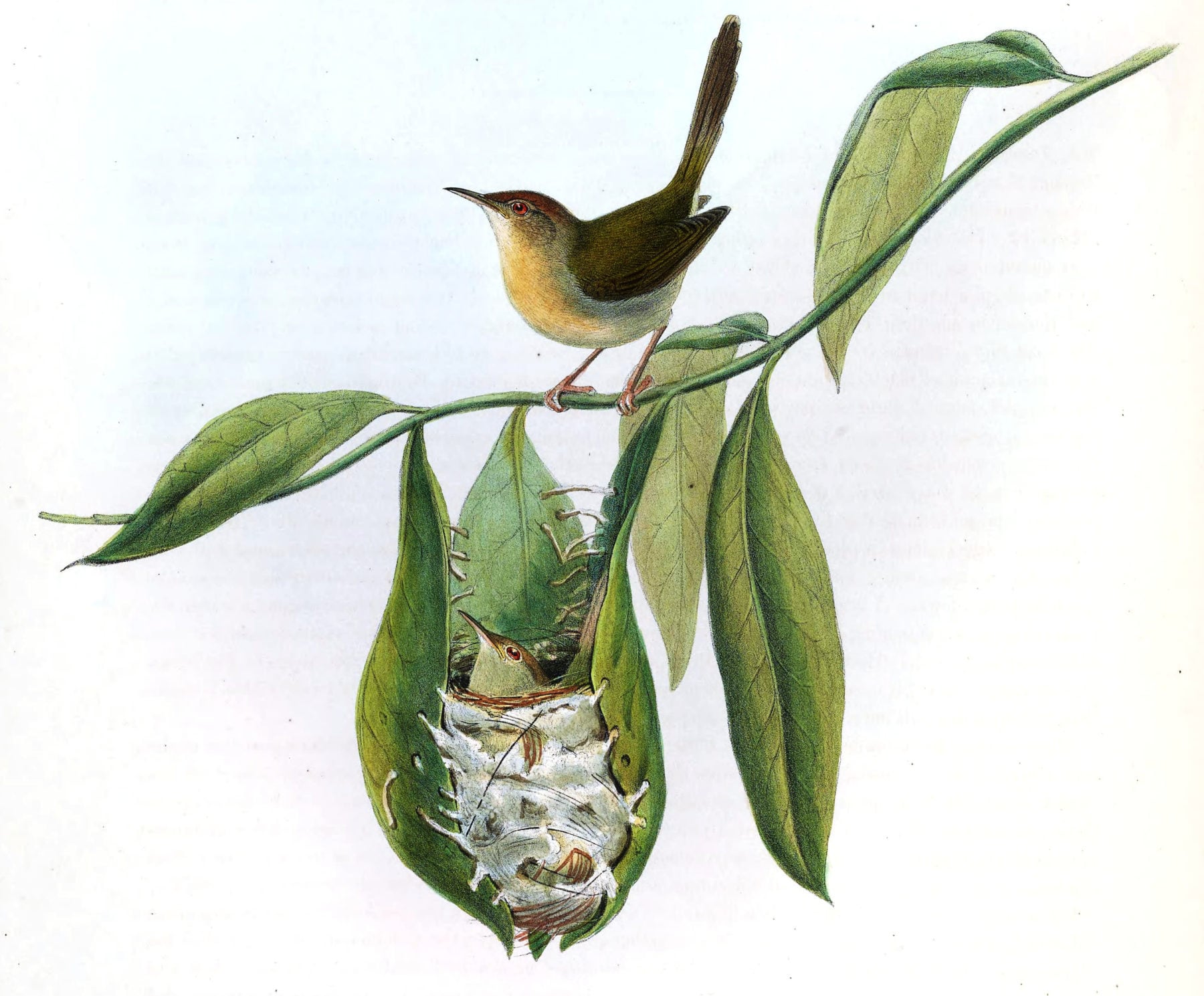The tailorbird’s nest-making has to be seen to be believed

Bec Crew
Bec Crew

TO CONSTRUCT ITS nest, the common tailorbird (Orthotomus sutorius) uses its delicate beak to stitch together leaves in exactly the same way we humans would if given a needle and thread.
Found throughout South and Southeast Asia, including in Indonesia, Thailand, and Vietnam, this little songbird gathers plant fibres and spider’s web, which it threads through perfectly placed holes in the edges of large leaves.
It pulls these threads tight to create a deep cradle, and inside that, it packs in a cosy nest of grass and down. If you’re a fan of the Jungle Book, you’ll remember Darzee was a tailorbird.
Here’s ornithologist John Gould’s illustration of the nest:

The tailorbird is so good at what it does, it knows to create the tiniest of holes in the edges of the leaves so it doesn’t wither and brown. This is important, because keeping its cradle looking the same as all the leaves around it is how the tailorbird camouflages itself and its young.
Watch it in action here, it’s kind of mind-boggling:
The common tailorbird belongs to the tailorbird genus, which includes 13 species, many of which have ruddy crowns and pretty green or yellow plumage.
One of the most recently identified species is the Cambodian tailorbird (Orthotomus chaktomuk), which was discovered in 2009 during routine checks for avian flu in Cambodia’s capital, Phnom Penh.
If we take this full circle and back to your new quarantine hobbies, you could knit nests of your own for rescue birds, particularly those in areas that have been affected by bushfires.
Here’s a video showing you how to do it, but make sure you contact Wires first to see where the nests are most needed:




